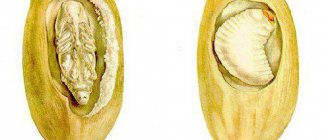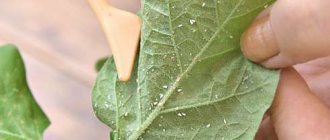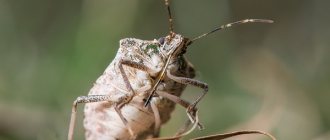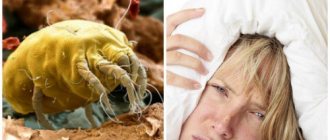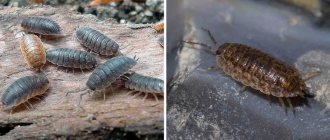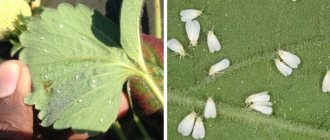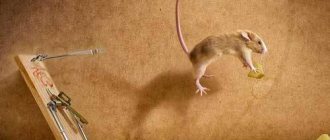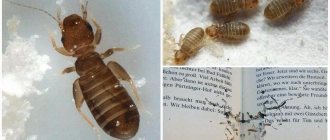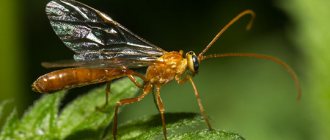Click beetles are a fairly large family in the order of beetles. Scientists have described more than 10 thousand species, which, after detailed study, were combined into 400 genera. The click beetle got its name for the characteristic click-like sound it makes when moving or trying to roll over from its back to its paws.
Click beetles are pests
These beetles live everywhere - from the Arctic to the tropics. They differ in color. In cold regions, dark beetles are found: black, brown with a metallic tint, striped. In the tropics and subtropics there are bright species of click beetles, displaying colors from red to green. Russia is home to steppe click beetles - dark, striped beetles that are pests of vegetable gardens. Next we will talk about them.
What are the main characteristics of the click beetle?
The sound made by the click beetle is not the only characteristic of this insect. Most of these beetles have an oblong body and a head that occupies a third of the length of the entire insect. Its larvae have an oblong, elongated shape, for which they were popularly nicknamed wireworms. The click beetle has a body size of within two centimeters. The main characteristics are given in the table.
| Options | General, uniting | Distinctive |
| Ways to move | ||
| Body Shape | The oblong head occupies a third of the body. Adults have wings and are capable of flight. All click beetles are endowed with a special mechanism that helps them turn over from their backs onto their paws. There are three pairs of paws with which they move on the ground and plants. | Sizes vary from 0.1-6 cm. |
| Dimensions | The sizes of different types vary from 0.1-6 cm. | |
| Color | The coloring of different species is different. Some of them have a pattern in the form of spots on the back. Tropical beetles have a bright color. | |
| Reproduction | Laying of eggs from which larvae are formed. The female never lays all her eggs in one place. One clutch contains 5-7 eggs. In everyday life, the larvae are called wireworms for their elongated body shape, divided into 13 members. The development of the click beetle larva lasts 3-5 years, depending on living conditions. | The larvae of individual click beetle species vary in color and size. |
| Spreading | These insects can be found everywhere, from the subarctic to the tropics. Only tropical species have been studied to a lesser extent than the inhabitants of northern latitudes. | According to the place of distribution and habitat. For example, true click beetles (Ampedus) live in forests. Nutcrackers prefer fields and vegetable gardens. |
| Protection from enemies | Does not use wings. Sensing danger, it begins to jump, click, and tries to carry its legs away. | |
| Nutrition | These beetles differ in the feeding of their larvae. Ampedus are predators. Nutcrackers are phytophagous and are pests of agricultural crops. |
Click beetle: description
Scientists know about more than 2 and a half thousand species of this pest of gardens and vegetable gardens. It can be found almost everywhere, even in the most seemingly unfavorable conditions for it.
The most widespread are steppe, striped and dark beetles. It is extremely difficult to confuse this pest with other types of pests. Adults grow up to 2 cm in length, have an oblong body, and the head occupies almost 2/3 of the body. The beetle may be black, brown or purple in color.
The beetle got its name due to the fact that when it jumps, it makes a sound similar to a click. Therefore, it is easy to distinguish it from other types of pests. You can often see various, rather intricate patterns on the beetle's wings or foredors.
It takes up to 5 years for an egg to develop into an adult click beetle. With the arrival of spring, females climb out of the ground through cracks in the ground, where they lay eggs. They are capable of laying up to one and a half thousand eggs, but for safety, they lay 5 eggs in each hole.
About a month later, voracious larvae emerge from the eggs. The first year of life is characterized by the fact that they do not cause significant damage to the crop, and only in the second year of life can real trouble be expected from them.
The wireworm has a strong body structure, which allows it to easily make thick passages in root crops. During this period, they eat swollen buds, young tubers, shoots and the root system of plants. The larvae pupate over several years and in the spring adult beetles emerge from the pupae, ready for further reproduction.
What does a beetle eat?
Most click beetles are omnivores. In Russia, steppe click beetles live - dark beetles that are pests of vegetable gardens. They especially love potatoes and other root vegetables. The striped click beetle prefers cereals and sunflowers. The small beetle also feeds on the roots of cereals and sunflowers, indulges in the pleasure of sugar beets and peanuts, and eats swollen seeds and seedlings, thereby reducing agricultural yields. The blood-spotted click beetle prefers pine and birch roots.
These beetles cause serious damage to many trees.
How dangerous are the offspring of the click beetle - about the omnivorous nature of the pest
When they say “wireworm,” they mean a larva whose taste preferences are so diverse that almost all crops in the garden can be affected, from potatoes and carrots to onions, beets and other vegetables and even cereals. The most delicious treat for wireworms are the roots of wheatgrass and a number of other weeds. Legumes, as well as flax and buckwheat, are also in demand among pests.
The most dangerous period is considered to be the third and fourth years of life - the time of active growth of the larva, when it is especially hungry. In search of food, the insect moves throughout the entire area, damaging everything it encounters along the way.
How to defeat a pest, which methods are more effective - chemical, biological or folk? Conclusions can be drawn only after testing each of them in practice.
Where does the beetle live?
Adults live openly. They can be found on trees, shrubs, and grass. Sometimes they hide in the bark of trees. Eggs are laid in the ground, so digging up the soil in autumn after the harvest is considered an effective method of combating nutcrackers and other pests living in the soil. Sometimes nutcrackers drop into houses (especially in rural areas). If you see an oblong beetle in a house, it should be destroyed immediately, as it does not disdain human food.
The woolly click beetle lives in fields and meadows. It is harmless, on the contrary, it is useful because it pollinates plants.
Agrotechnical methods against click beetles and wireworms
Agronomists have their own ways of controlling pests in the garden. They also know what needs to be done to prevent the click beetle from interfering with the normal development of the crop. Most often, experts suggest:
- change the soil acidity level;
- replace agricultural crops on the site affected by wireworms;
- get rid of weeds, which are a source of food for pests before the potatoes appear;
- dig up the soil to a depth of 30-40 cm;
- introduce nitrogenous substances;
- plant crops that are hated by the wireworm at the same time as potatoes;
- mechanically catch male click beetles.
How is the agricultural method used?
Agrotechnical methods of combating the click beetle mean:
Read on topic:
Features of the life activity of ladybugs
14.11.2020
Description of chironomids and their possible danger to humans
14.11.2020
What do cutworms look like and what harm do they cause?
14.11.2020
What do goliath beetles look like and can they be bred at home?
14.11.2020
- digging up the earth in autumn and winter;
- alkalization of soils by adding ash or lime;
- It is recommended to place potato crops in the new year in areas where legumes grew a year ago.
Ash helps remove beetles.
Frequent weeding of the beds gets rid of not only weeds, but also pests.
In order to reduce the number of click beetles, baits made from cut potatoes are laid out in greenhouses before planting. Baits must be checked regularly and any larvae that have entered the potatoes must be destroyed.
Spicy plants such as mustard, rapeseed, oilseed radish, as well as sweet clover, peas, and spinach repel the beetle.
When planting potatoes, it is recommended to plant beans every three bushes, which nutcrackers also do not favor. You can scatter onion peels under the potatoes, and before planting the potatoes, wash the tubers with onion broth.
What does a damaged vegetable look like?
Click beetles cause great damage to the potato crop. It is very difficult to remove wireworms from a potato tuber if it has already settled there. The vegetable is no longer suitable for eating.
In the photo you can see what infected potatoes look like. It's full of holes made by worms. They leave passages of complex shape. Sometimes rot has already begun inside. The holes in the tubers are already visible from the outside. Such a root crop is difficult to peel and cut, removing these passages and worms. It is often thrown away and not used for food.
See also
Description of the Timo potato variety, its characteristics and yieldRead
Fungi, rot, bacteria, and mold can enter through the holes. Such a vegetable is already difficult to save. All this greatly affects the appearance of the potatoes and the quality. It is necessary to destroy these insects, otherwise they will eventually destroy the entire crop . It is best to take preventive measures.
What chemicals are allowed?
The larvae of the click beetle (wireworms) die when ammonia and potassium fertilizers are added to the soil. For example, ammonium sulfate, which serves as a fertilizer for plants, is toxic to these insects. Treating the wells with a solution of potassium permanganate (potassium permanganate) also gives good results.
To fight, you can use a remedy called Gaucho
Seed dressing also has a good effect. Approximately 2 weeks before the main planting of crops, seeds treated with one of the following products (Gaucho, Taboo, Cruiser, Prestige) are added to the soil. The larvae eat the poisoned seeds and die.
At the larval stage, the click beetle dies when exposed to ammonia and potassium forms of fertilizers. A consistently toxic result for insects is achieved by applying ammonium sulfate in the spring at a rate of 25 g per m². Seedlings can be protected by pre-treating the planting hole with a weak solution of potassium permanganate.
Harm from wireworm
Black beetles on potatoes and other crops are considered an alarming symptom. They gnaw vegetable tubers and damage cereals. As a result, the plant becomes significantly weaker. Insect damage leads to a slowdown in the development of tops. Pests make holes in root crops, which negatively affects the quality of the crop. The larvae also carry fungal diseases and bacteria.
Affected vegetables lose their marketable value. In addition, they cannot be eaten, due to a significant reduction in storage period. Such root crops quickly begin to rot. The click beetle also poses a threat to humans. This is due to the need to use chemicals. Toxins accumulate in fruits and soil. This negatively affects the harvest next year.
How to make traps
Amateur gardeners came up with such a trap for a malicious pest. Take a liter plastic bottle. The neck with a small part of the body is cut off. A stopper is not needed. The inverted neck is inserted into the lower part of the bottle, where a little beer was previously poured (for the smell). To prevent large and beneficial insects and small frogs from falling into the trap, a stopper nail should be inserted immediately under the neck. Wireworms will freely crawl under the nail into the neck and plop down into the bottom of the bottle, right into the beer, and they won’t be able to get out of there. Several similar traps can be placed at some distance from each other, sprinkled lightly with earth. To prevent the beer from leaking out, it is recommended to lift the trap at a slight angle.
You will learn more about click beetles from the video:
Chemists synthesized female pheromones. This substance attracts males for reproduction. A capsule with a pheromone is placed on a sticky trap, where the males are caught. Thus, the fertility of beetles in the area decreases, and accordingly, the laying of eggs and the appearance of larvae decreases.
Chemical agents against wireworms: which ones work?
So, if a wireworm larva, also known as the offspring of a click beetle, has appeared on the site, and has managed to cause serious damage to crops while continuing to reproduce, it is worth taking urgent action. In this case, chemicals will help deal with the garden enemy as quickly and without problems as possible. Most often, experienced gardeners use:
- nitrogenous fertilizers and ammonia water;
- calcium chloride;
- diazinon solution at the rate of 30 g per 10 m2 when planting potatoes;
- “Bulba” from the Biomaster series during planting of crops;
- "Thunder-2";
- "Initiative";
- "Zemlin";
- "Bazudin";
- a weak solution of potassium permanganate (add to the wells);
- processed superphosphate granules, etc.
If insecticides and chemical solutions do not seem to be the most harmless way to get rid of pests, then it is worth trying to exterminate the larvae using traditional methods. With a small degree of infection, some of them can produce results.
